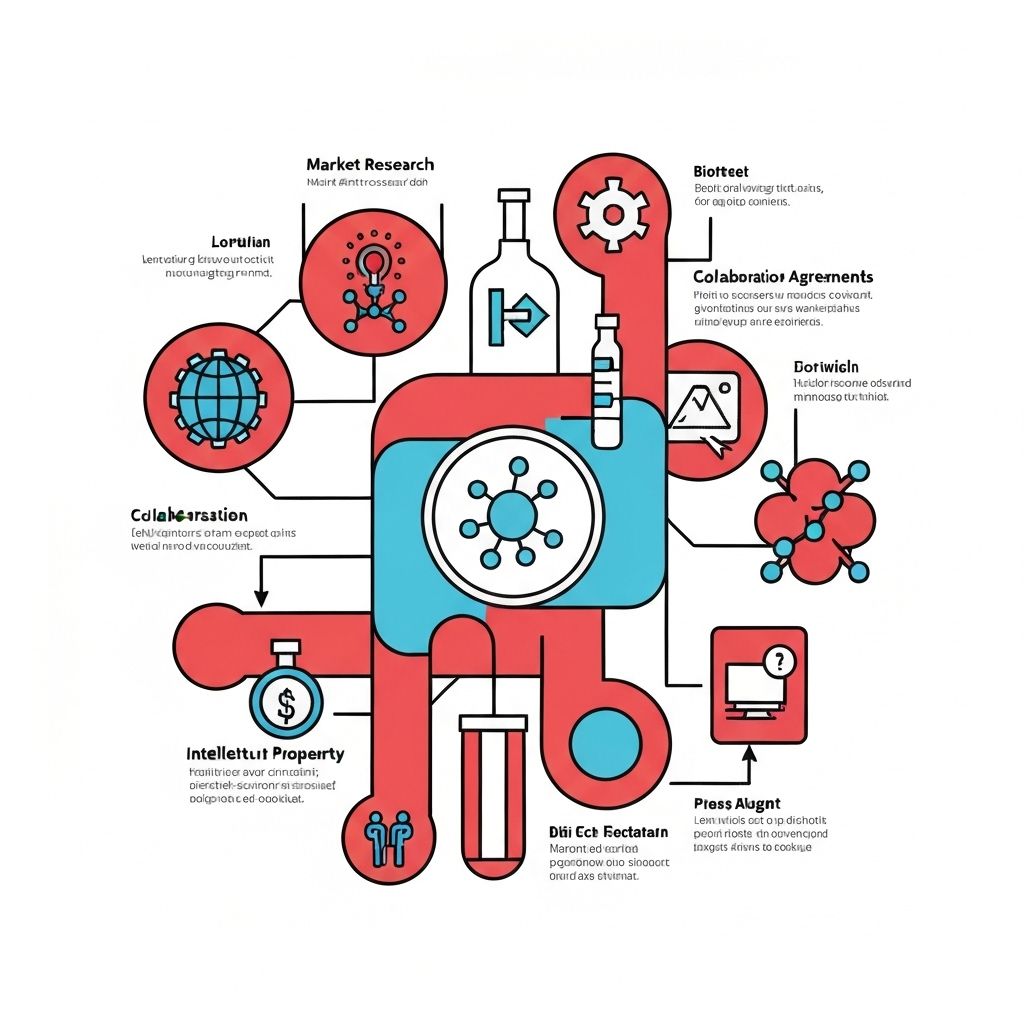SDR Strategies That Actually Work for Biotech Partnership Development

Biotech partnership development is unlike any other sales process. The stakes are higher, the sales cycles are longer, and the decision makers are more sophisticated. Traditional SDR tactics that work in other industries often fall flat when trying to secure partnerships with pharmaceutical giants.
After analyzing successful biotech partnerships and interviewing dozens of business development professionals, we've identified the SDR strategies that actually move the needle in biotech partnership development.
Understanding the Biotech Partnership Landscape
Before diving into tactics, it's crucial to understand what makes biotech partnerships unique:
- High-value transactions: Deals often range from $50M to $1B+
- Long sales cycles: 12-24 months from first contact to signed agreement
- Multiple stakeholders: Scientific, commercial, legal, and executive teams all involved
- Risk assessment focus: Extensive due diligence on science, IP, and market potential
- Regulatory considerations: FDA approval pathways and regulatory strategy
Strategy 1: Scientific Credibility First
In biotech, credibility is everything. Your SDR approach must demonstrate deep scientific understanding from the very first touchpoint.
Tactics that work:
- Reference recent publications: Mention specific papers published by the target company's research team
- Understand their pipeline: Know their current clinical trials, therapeutic areas, and development stage
- Speak their language: Use appropriate scientific terminology and demonstrate mechanism of action understanding
- Highlight relevant expertise: Lead with your team's scientific credentials and relevant experience
Example opening:
"Hi Dr. Johnson, I read your recent Nature paper on novel KRAS inhibitors with great interest. Your approach to targeting the G12C mutation aligns perfectly with our proprietary delivery platform that's shown 3x improved bioavailability in similar oncology applications..."
Strategy 2: Value-Based Positioning
Biotech partnerships aren't about selling products—they're about creating mutual value through complementary capabilities.
Focus on these value drivers:
- Risk mitigation: How your partnership reduces their development risk
- Speed to market: Accelerating their timeline to key milestones
- Cost efficiency: Reducing overall development costs
- Market access: Leveraging your commercial capabilities or relationships
- Scientific synergies: Combining complementary technologies or expertise
Strategy 3: Multi-Threading from Day One
Biotech partnerships require buy-in from multiple departments. Start building relationships across the organization early.
Key stakeholders to engage:
- Chief Scientific Officer: Scientific validation and strategic fit
- Head of Business Development: Deal structure and terms
- VP of Clinical Development: Regulatory pathway and trial design
- Chief Medical Officer: Clinical strategy and medical affairs
- CEO/President: Strategic vision and final approval
Strategy 4: Timing Intelligence
Knowing when to reach out can make or break your partnership efforts. Biotech companies have specific windows when they're most receptive to partnerships.
Optimal timing triggers:
- Post-funding events: 30-90 days after Series B+ funding rounds
- Clinical milestones: Following positive Phase I/II data readouts
- Conference presentations: Before and after major industry conferences
- Patent publications: When new IP becomes public
- Leadership changes: New BD heads often review partnership strategies
Strategy 5: Content-Driven Nurturing
Long sales cycles require consistent, valuable touchpoints. Content marketing becomes a crucial SDR tool.
High-impact content types:
- Scientific white papers: Demonstrating thought leadership
- Case studies: Successful partnership examples (with permission)
- Market analysis: Insights into therapeutic area trends
- Regulatory updates: FDA guidance and pathway analysis
- Technology spotlights: Deep dives into your platform capabilities
Strategy 6: Conference and Event Leverage
Industry conferences are goldmines for biotech partnership development. Use them strategically.
Pre-conference preparation:
- Research attendee lists and identify target contacts
- Schedule meetings 4-6 weeks in advance
- Prepare customized materials for each meeting
- Plan follow-up sequences for post-conference engagement
During the conference:
- Attend relevant scientific sessions to stay current
- Host hospitality events for key prospects
- Collect business cards and take detailed notes
- Schedule follow-up meetings before leaving
Strategy 7: Relationship-Based Introductions
Warm introductions carry enormous weight in biotech. Leverage your network strategically.
Key relationship sources:
- Scientific advisors: Often have connections across the industry
- Investors: VCs and PE firms with portfolio connections
- Former colleagues: People who've moved between companies
- Conference speakers: Industry thought leaders and KOLs
- Board members: Often serve on multiple company boards
Measuring Success in Biotech SDR
Traditional SDR metrics don't always apply in biotech. Focus on quality over quantity.
Key metrics to track:
- Scientific meetings scheduled: Meetings with CSOs, CMOs, heads of R&D
- Multi-stakeholder engagement: Number of different departments engaged
- Content engagement: Downloads, time spent on materials
- Conference meeting conversion: Meetings scheduled to actual meetings held
- Pipeline progression: Movement through partnership evaluation stages
Common Mistakes to Avoid
- Generic outreach: Using the same message for different therapeutic areas
- Rushing the process: Pushing for meetings before establishing credibility
- Ignoring the science: Focusing only on business terms without scientific validation
- Single-threading: Only building relationships with one stakeholder
- Poor timing: Reaching out during busy periods like conference season
Conclusion
Successful biotech partnership development requires a fundamentally different SDR approach. It's about building scientific credibility, creating genuine value, and nurturing relationships over extended periods.
The companies that master these strategies don't just secure partnerships—they build lasting relationships that drive innovation and bring life-saving therapies to patients faster.
Remember: in biotech, you're not just selling a product or service. You're proposing to join forces in the pursuit of scientific breakthroughs that can change the world.
Ready to Transform Your Pharmaceutical Outreach?
Get a custom strategy session to discover how AI-powered outreach can help your life sciences company secure more partnerships with pharmaceutical and biotech companies.